Myth Busting
7 myths about vinyl replacement windows
Millions of homes around the United States are losing energy through the older inefficient windows. On the top of that older windows are difficult to open, clean, and require a lot of upkeep. Energy efficient windows can significantly reduce your utility bills and make your home more comfortable as well. Then, why so many homeowners are still hesitating to get new windows? Part of the problem is the myths. Vinyl replacement windows have not been without their critics and some of the early myths have been difficult to dispel.

This page will help you separate the myths from the facts. Read this section and use your common sense. You are smart and you can think for yourself. And you are the only person who can decide.
Myth#1
Vinyl windows are not cost effective
Some people argue that vinyl windows are not cost effective because of the doubtful energy savings and a long payback time.
FACT #1 Energy efficient vinyl windows are among the most cost effective and logical solutions to improve your home’s energy efficiency and comfort, and are virtually maintenance-free.
FACT #2 Older single-pane glass windows have R-Value of around 1 and U-Value around .90. The fact is that with such low energy ratings these windows do not stop the heat and cold transfer at all. Having single-pane windows is like having one window in your home open at all times. Triple-pane windows with LowE and Argon gas have generally R-Values or around 5 and U-Value of around .20. Depending on your manufacturer and the quality of the glass package, these windows are between 400% and 700% more energy efficient than the single pane windows.
FACT #3 ENERGY STAR window ratings are more stringent than ever. The Department of Energy (DOE) and the Environmental Protection Agency (EPA) introduced new ENERGY STAR ratings in October 2023. Also, DOE with its plan for net-zero homes is promoting windows with R-Value 5 and higher.
FACT #4 Millions of homeowners have already purchased energy efficient windows. 9 out of 10 homeowners purchased windows with high performance triple-pane glass. Triple-pane windows can save up to 25% more on energy that their double-pane counter parts. Additionally, number of states have been promoting triple-pane glass windows with the variety of incentive programs such as: EnergizeCT Triple-Pane Rebate in Connecticut and Save Mass Triple-Pane Rebate in Massachusetts. Triple-pane windows are an investment that will pay overtime in significantly reduced energy bills, increased comfort and increased overall quality of life of and American homeowner.
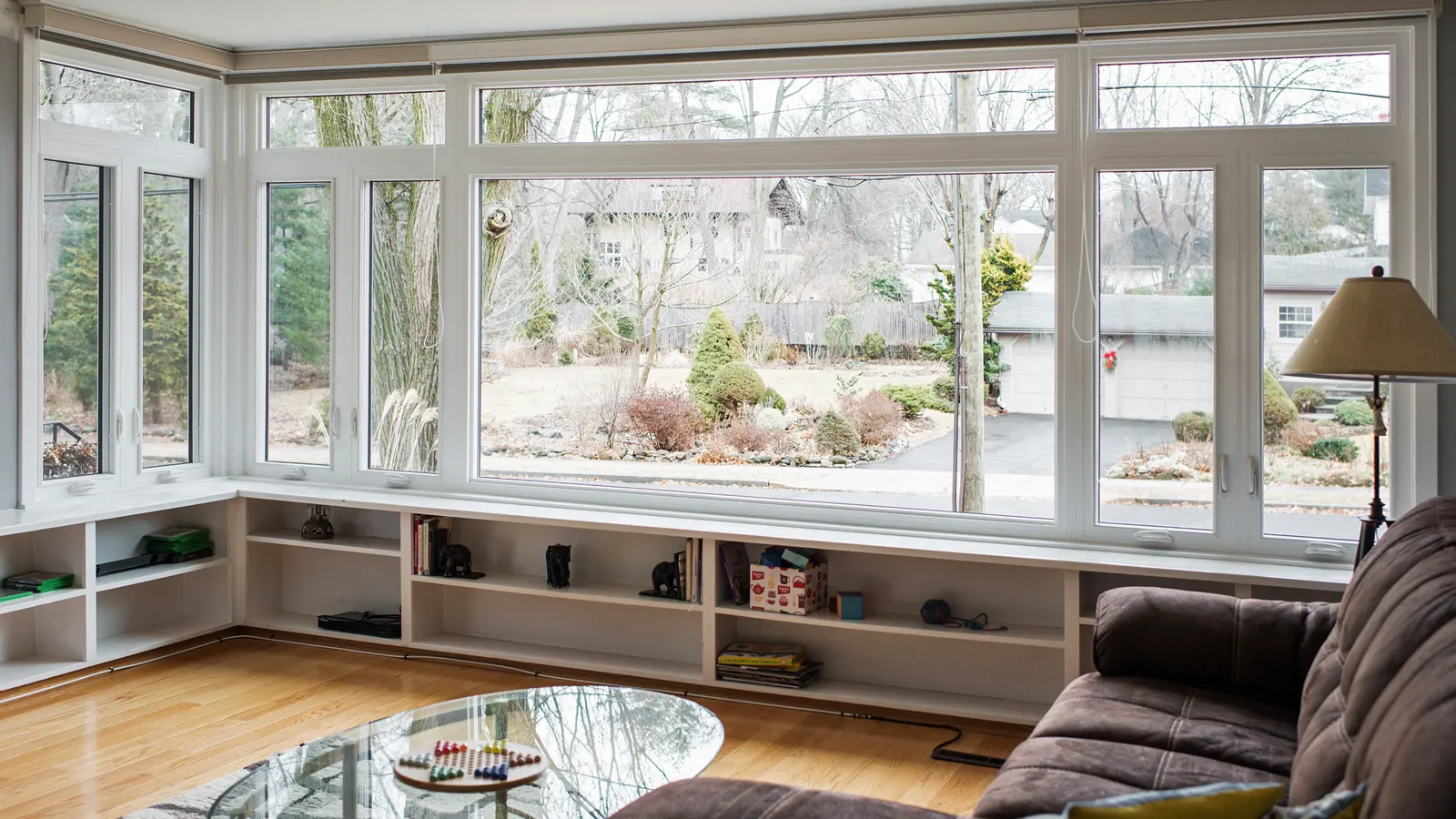
uPVC vinyl casement windows by OKNA
Installed by SEVEN SUN
Myth#2
VINYL FRAMES WILL YELLOW AND SAG OVERTIME
FACT#1 High quality vinyl windows will not sag and keep their beautiful luster for a lifetime. Just shop for quality.
FACT#2 The fact is that you will get what you will pay for. This adage applies to replacement windows as well.
FACT#3 Some manufacturers, indeed, use lower quality vinyl resin with lower amounts of titanium dioxide (TiO2,) or recycled material called pellets. These frames have polar blue shade and tend to yellow overtime. High quality vinyl frames are made of pure vinyl virgin resin – the material that has never been used before. It has pure painter’s white color (not blue or grey looking) that will last for a lifetime. Also, manufacturers of premium windows use stabilizers and impact modifiers to add to the strength of the frame.
FACT#4 Additionally, quality vinyl windows have composite reinforcements strategically placed in window frames. This adds to the strength of the frame and prevents sagging. European tilt and turn windows have multiple-chamber frame design with steel reinforcements throughout entire window frame.
FACT#5 Quality uPVC vinyl windows are so strong and durable that the vast majority of them installed over the past 35 years are still in use.1
Myth#3
VINYL DOES NOT INSULATE WELL
FACT#1 Multi-chamber uPVC vinyl windows have excellent thermal properties and very often exceed those of the windows made from other materials.
FACT#2 uPVC vinyl is a non-conductive material and in respect to energy efficiency, it outperforms competitive products such as aluminum, which is a highly conductive material.
FACT#3 High quality uPVC vinyl frames and sashes are fusion welded for protection against air and water infiltration. Additionally, uPVC vinyl frames are constructed of various sized airspaces, also called chambers. Airspaces with dead air trapped inside are an excellent barrier to heat transfer. Most manufacturers use insulation inside the frames.
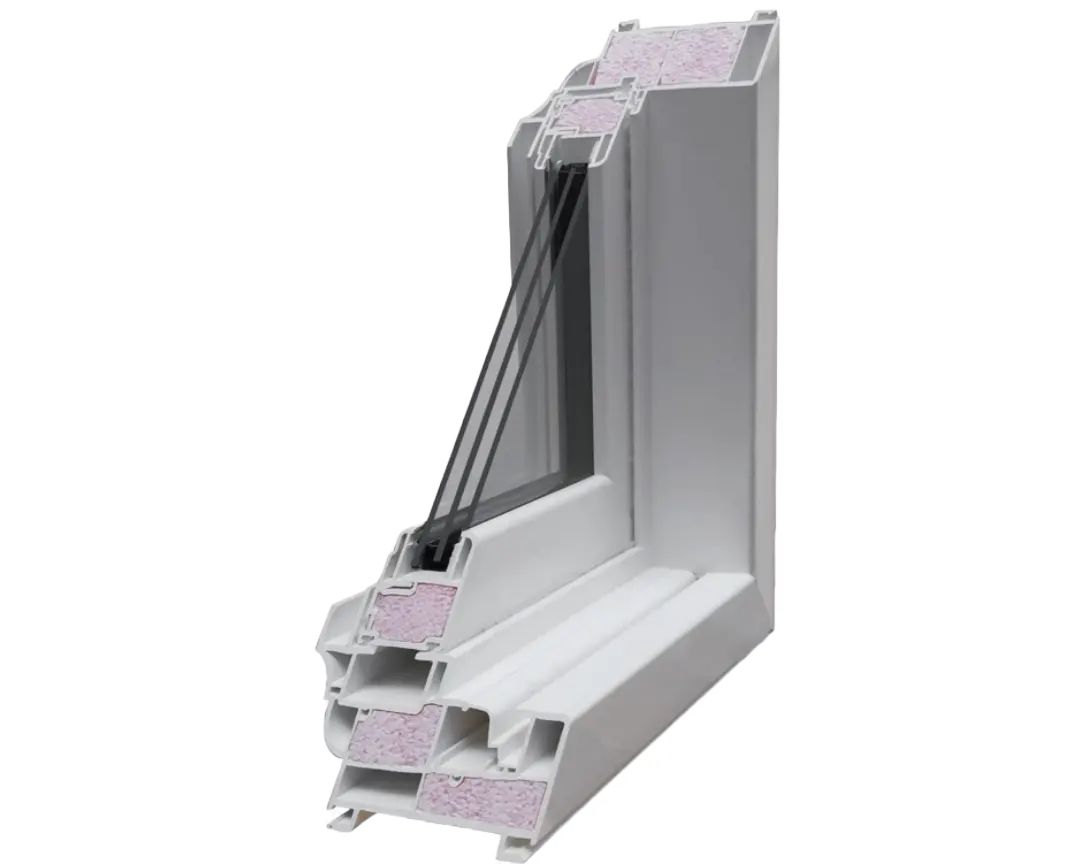
Myth#4
VINYL WINDOWS LOOK ARTIFICIAL
FACT#1 You can have the appealing beauty of custom-crafted windows without compromising the feel and look of the high-end wooden windows. Plus, you will never have to scrape, send or paint your windows again.
FACT#2 New cutting-edge technologies make it possible to achieve beautiful interior and exterior colors on uPVC vinyl windows. These high-performing laminates feature rich hues and natural-looking wood finishes that are remarkably strong and fade resistant.
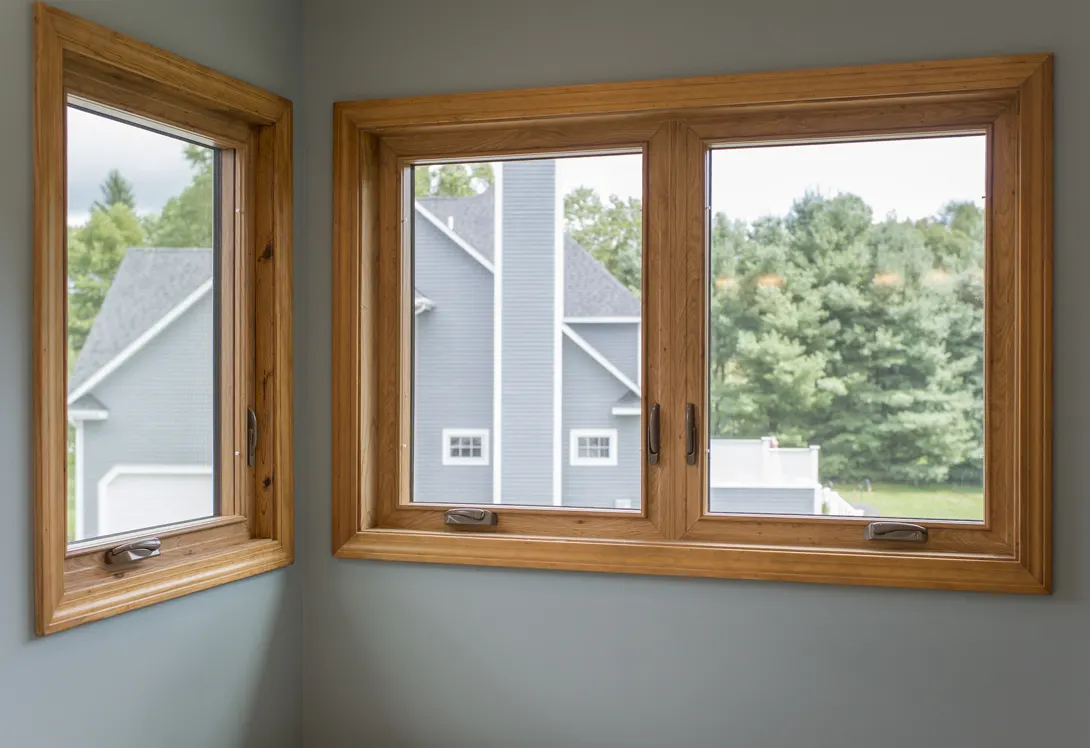
uPVC vinyl casement windows in Winchester color by OKNA
Installed by SEVEN SUN
Myth#5
VINYL WINDOWS CAUSE CONDENSATION
FACT#1 Windows do not cause condensation. They prevent humidity from escaping and provide easy surface for condensation to collect.
FACT#2 Old drafty windows allow humidity to escape.
FACT#3 New energy-efficient windows create a tighter seal, and the extra moisture in your home is unable to escape, therefore making you more aware of excess humidity.
FACT#4 The key to reducing condensation is to eliminate excess humidity.
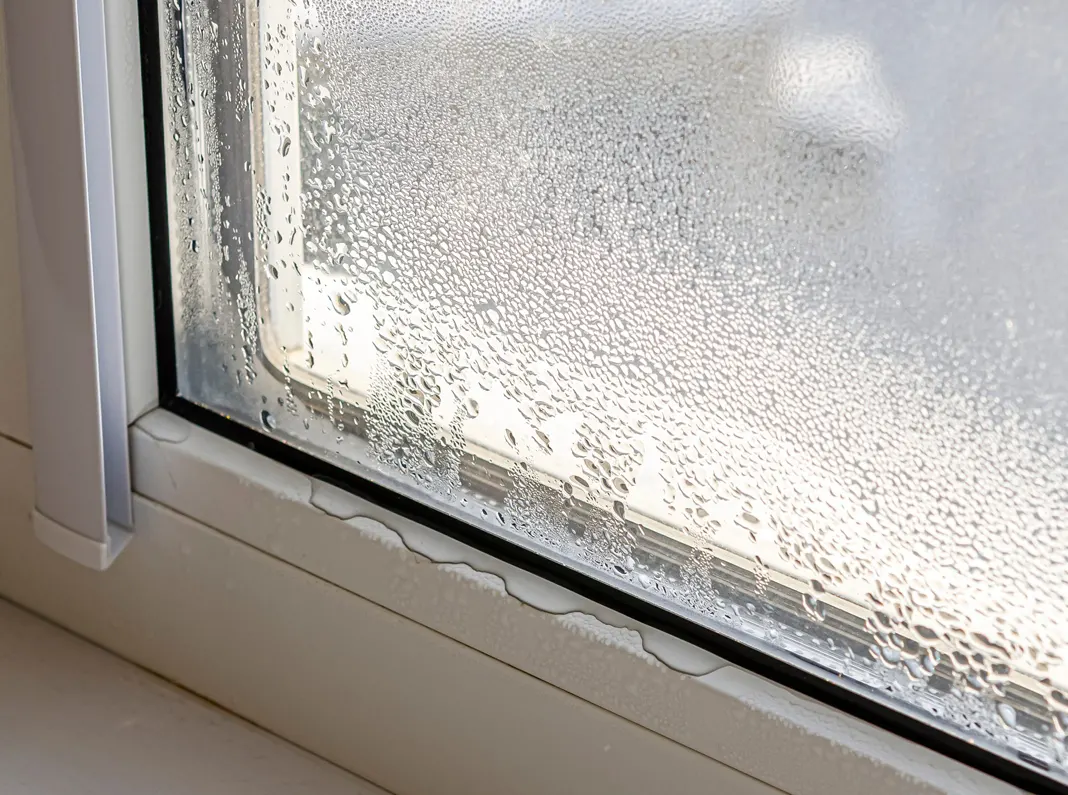
Myth#6
THERE’S NO NEED TO GET TRIPLE-PANE INSULATED GLASS WITH GAS FILLS. GAS WILL LEAK OUT ANYWAY.
FACT#1 uPVC windows with either HeatSeal or Warmatec spacer technologies dramatically reduce the probability of seal failure in comparison to other spacer materials.
FACT#2 First generation windows featuring metal spacers had a pretty high rate of seal failure – one of the main causes for leaking gas and foggy windows.
FACT#3 HeatSeal and Warmatec spacer systems flex along with the movements of the glass during extreme temperature changes. This feature of high performance spacers prevents seal failures and gas leakage.
FACT #4 Triple-pane glass uPVC windows with advanced HeatSeal and Warmatec spacer technologies are some of the most energy-efficient windows on the market today.
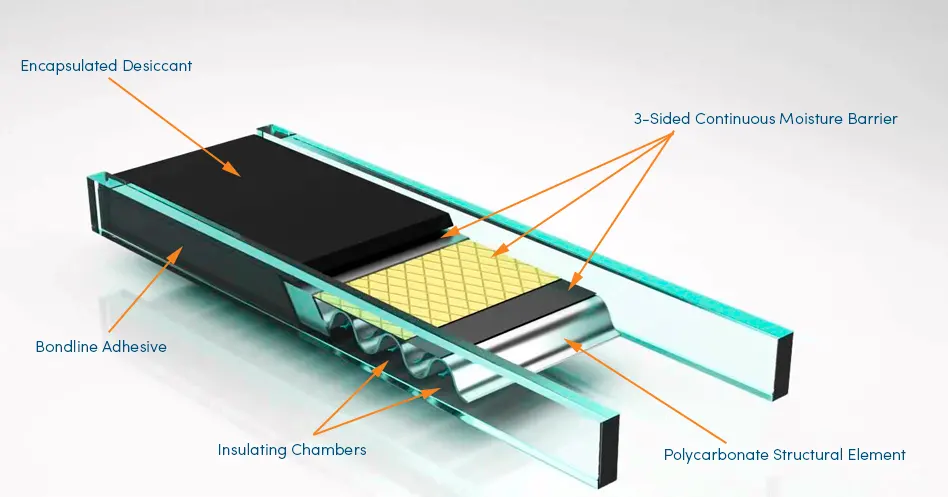

Myth#7
VINYL WINDOWS HARM ENVIRONMENT AND PEOPLE
FACT#1 uPVC vinyl windows are among the safest and environmentally friendly materials in the market today.
FACT#2 uPVC vinyl is made of plentiful sustainable resources. The leading component in the production of vinyl is common salt, an abundant and inert natural resource. More than 50% of vinyl resin is derived from salt, natural gas or petroleum makes up the balance. Worldwide, vinyl production accounts for less than 0.3% of all annual oil and gas consumption and about 10% of annual salt consumption.1
FACT#3 uPVC vinyl windows, because of energy efficiency, thermal-insulating value, low contribution to greenhouse gases, easy maintenance and superior durability, provide excellent life cycle benefits1.
FACT#4 A study conducted by Franklin Associates shows that uPVC vinyl windows require only one-third as much energy to manufacture as aluminum windows1.
FACT#5 The same study found that using uPVC vinyl over aluminum or steel window frames saves the United States nearly 2 trillion BTUs of energy per year – enough to meet the yearly electrical needs of 20,000 single-family homes1.
FACT#6 uPVC vinyl windows, which are based on naturally fire-retardant polymer, have excellent fire performance qualities. uPVC vinyl is self-extinguishing when a flame source is removed1.
FACT#7 The uPVC vinyl industry has subject its products to extensive testing to demonstrate that
they are safe to use1. uPVC vinyl manufacturing today accounts for less than 1% of dioxin releases to the environment – less than many other manufacturing operations and building products3.
1 A Clear View-Vinyl Windows and the Environment. American Architectural Manufacturers Association (AAMA) & The Vinyl Institute (VI). March 2007
2 AAMA/WDMA report, 2010.
3 U.S. EPA Inventory of Sources of Dioxin and Dioxin-Like Compounds
